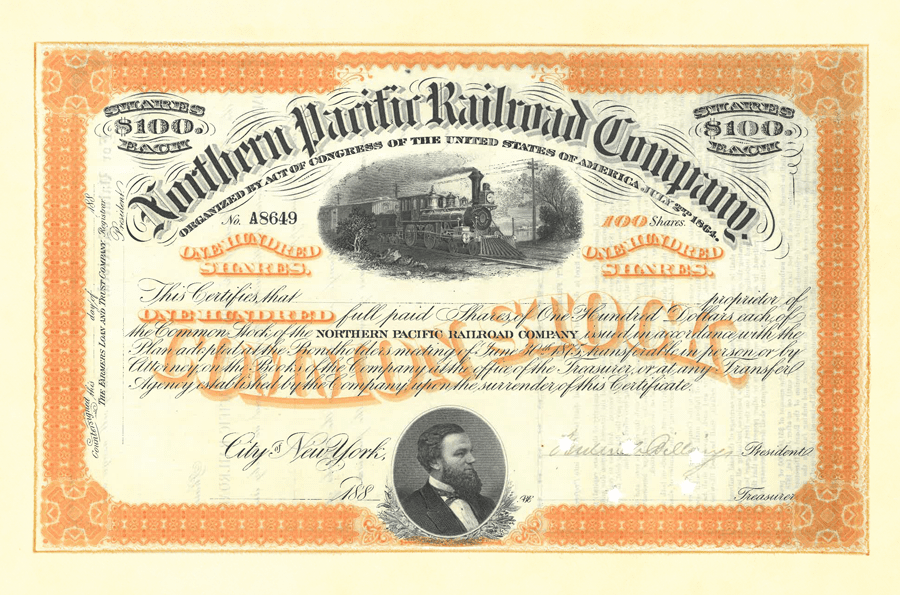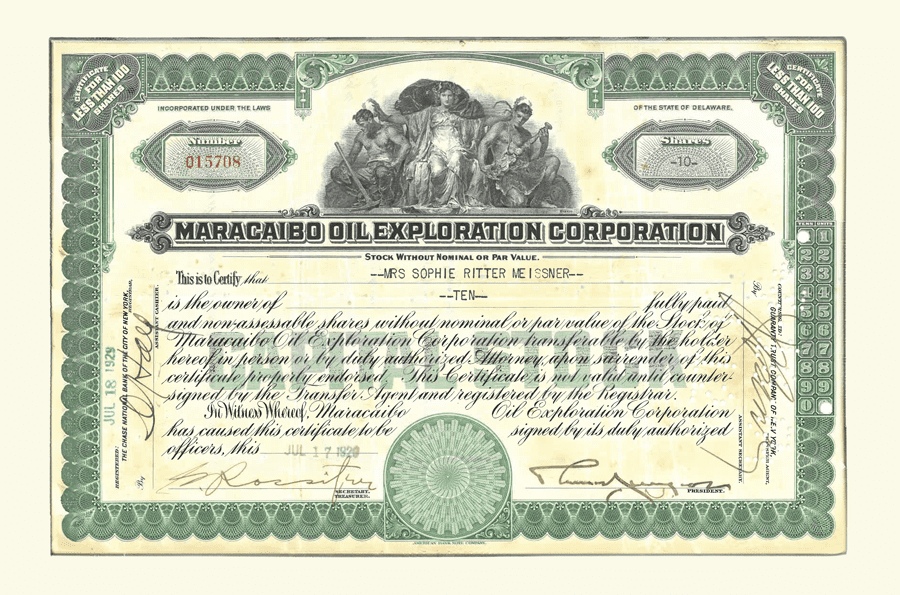In my daily search for early books and magazines covering several fields, I was fortunate to stumble upon a site offering some early stock certificates relating to oil.
Writing oil adventures and my petrothrillers, sitting comfortably in the Manville New Jersey Public Library, I was intrigued by the discovery of a forgotten Venezuelan oil story that took place in the first half of the last century. One need not explain the significance of this South American nation to petroleum finds in this country, but the story behind Maracaibo Oil is worth remembering.
To really appreciate the find of this early stock certificate, we should go back to Lake Maracaibo and its abundance in both gas and oil reserves. The actual discovery of oil here goes back to the time of the First World War around 1914. Once the richness in the petroleum reserves was realized, the fields took on the nickname “oil lake.” Drilling started around 1917.
As President Warren Harding (on whom I lecture) sat in the White House in 1922, large-scale exploration was underway in Lake Maracaibo. Harding had no place with this oil issue – his time would come later with Teapot Dome – but that’s another story with a tale of a somewhat cash-driven Secretary of the Interior Albert Fall and how to make some cash with Navy petroleum reserves.
To get back to our tale, the Maracaibo oil fields were found to contain the most significant oil finds in the Northeast and Northwest parts of Lake Maracaibo. For our readers interested in greater detail, those oil filled layers consisted of Tertiary sandstone and Cretaceous limestone. (I have to write something here to appeal to the geologist as well as the historian.)

The find was more than record shattering at that time and the area with the richest hydrocarbon layers covered 1,200 square kilometers. Exact locations are well known. It is unfortunately an exciting story of discovery, but today, in the opinion of some, an ecological disaster. That is for environmental experts to judge; I am not an expert.
The certificate I was fortunate enough to find was owned by a Mrs. Sophie Ritter Meissner and issued on July 17, 1929 – not a great year here in the United States with Coolidge (also another story). Ms. or Mrs. Ritter (I cannot say for sure) bought ten shares of Maracaibo Oil Exploration.
A tremendous reserve and a most significant find. Maracaibo Oil went along merrily until sometime in 1935. The fateful year was a turning point for Maracaibo Oil. The breaking that day is quoted in part below (and may differ slightly from the unavailable original).
“The Maracaibo Oil Exploration Corporation notified the New York Stock Exchange yesterday that on June 17 it will surrender to the government of Venezuela, through its subsidiary, the Urdaneta Exploration Company, approximately 12,000 acres in the State of Zulia, District of Perija, reducing its acreage there, exclusive of royalty interests, to 25,000 acres.”
What is also intriguing here is the early involvement of Tweedy Browne, a major investment firm, and possibly a young Warren Buffet. What happened with these folks in the financial arenas is beyond my scope of knowledge.
I am happy to share the beauty of this certificate with readers of Energies Media and, by accident, found another stock certificate from an early railroad company in the packet I acquired with Maracaibo. The railroad stock is just another example of how investors, years ago, got a work of art on paper, in addition to their hard cash investment.
It is from a long forgotten part of oil history but significant in getting a good historical perspective on the early days of exploration and drilling.
Born in Brooklyn, Gary Kraidman received a Bachelor of Science degree from Brooklyn College and a Master of Science (cum laude) in microbiology from Long Island University. He began his career with Tenneco Chemicals as a microbiologist in Piscataway, New Jersey. He later took a position with New Brunswick Scientific Company, retiring after 25 years on the road. In retirement, he developed a fascination with President Warren G. Harding, collecting memorabilia and ultimately lecturing on the former president. Shortly thereafter, Kraidman began writing petro thrillers, including Anaerobe (A Nick Torno petro thriller), short stories, poems, and a climate tale. He is honored to have all of his works in the Manville Public Library in New Jersey.
Kraidman is currently at work on a project that would involve using tunicates to extract vanadium, a rare earth element, from the ocean. For more information, interested parties can contact him at gfainc@aol.com.







